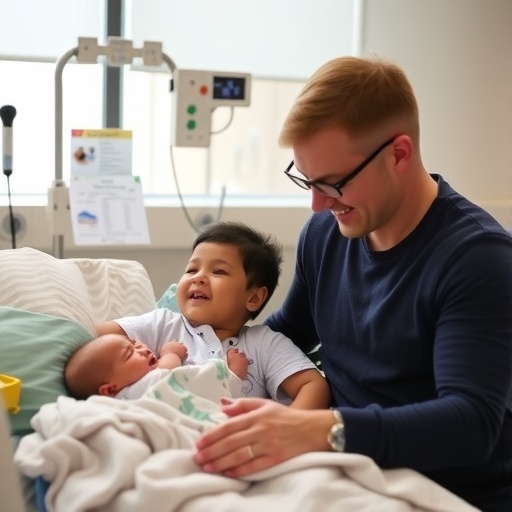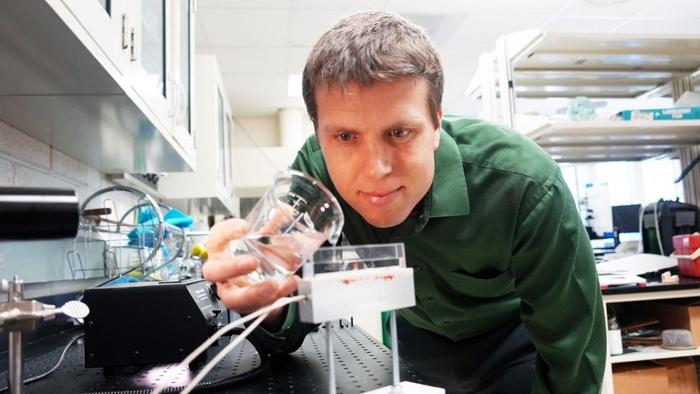Credit: UHN
(TORONTO, Canada – Aug. 4, 2017) – Neuroscientists have uncovered the genetic basis for why many long-term survivors of childhood cancer develop meningiomas, the most common adult brain tumour, decades after their treatment with cranial radiation.
The findings, published online today in Nature Communications, show that radiation causes genetic rearrangements in DNA that result in meningiomas, say co-principal investigators Gelareh Zadeh, neurosurgeon-scientist, Head of Surgical Oncology, and Ken Aldape, neuropathologist-scientist, Director, MacFeeters-Hamilton Neuro-Oncology Research Program, Princess Margaret Cancer Centre, University Health Network.
Dr. Zadeh is an Associate Professor, Division of Neurosurgery, and holds the Wilkins Family Chair in Brain Tumor Research; and Dr. Aldape, Professor, Laboratory Medicine and Pathobiology, both at University of Toronto.
The study compared and contrasted the biology of radiation-induced meningiomas (RIMs) to those that appear sporadically in the general population. "Radiation-induced meningiomas appear the same on MRI and pathology, feel the same during surgery and look the same under the operating microscope. What's different is they are more aggressive, tend to recur in multiples and invade the brain, causing significant morbidity and limitations (or impairments) for individuals who survive following childhood radiation," says Dr. Zadeh.
The research team analyzed RIMs from patients who had received cranial-spinal radiation as children; the majority of whom (74%) had survived either leukemia or pediatric brain cancer. The study also showed that RIMs developed regardless of the radiation dose by collaborating with scientists in Germany where low-dose radiation was a common treatment many years ago for scalp ringworm.
"By understanding the biology, the goal is to identify a therapeutic strategy that could be implemented early on after childhood radiation to prevent the formation of these tumours in the first place," says Dr. Zadeh.
Dr. Aldape says: "It is an important clinical problem because it presents a paradoxical dilemma that while cranial-spinal radiation is needed to cure many childhood cancers, an unfortunate consequence is that 10-to-15-years following radiation treatment some survivors develop meningiomas.
"Our research identified a specific rearrangement involving the NF2 gene that causes radiation-induced meningiomas. But there are likely other genetic rearrangements that are occurring as a result of that radiation-induced DNA damage. So one of the next steps is to identify what the radiation is doing to the DNA of the meninges."
He adds: "In addition, identifying the subset of childhood cancer patients who are at highest risk to develop meningioma is critical so that they could be followed closely for early detection and management."
###
The research was funded by Canadian Institutes of Health Research, the MacFeeters-Hamilton Neuro-Oncology Research Program, the Wilkins Family Chair in Brain Tumor Research, and The Princess Margaret Cancer Foundation.
About Princess Margaret Cancer Centre, University Health Network
The Princess Margaret Cancer Centre has achieved an international reputation as a global leader in the fight against cancer and delivering personalized cancer medicine. The Princess Margaret, one of the top five international cancer research centres, is a member of the University Health Network, which also includes Toronto General Hospital, Toronto Western Hospital, Toronto Rehabilitation Institute and the Michener Institute for Education; all affiliated with the University of Toronto. For more information, go to http://www.theprincessmargaret.ca or http://www.uhn.ca .
Media Contact
Jane Finlayson
[email protected]
416-946-2846
@UHN_News
http://www.uhn.on.ca/





